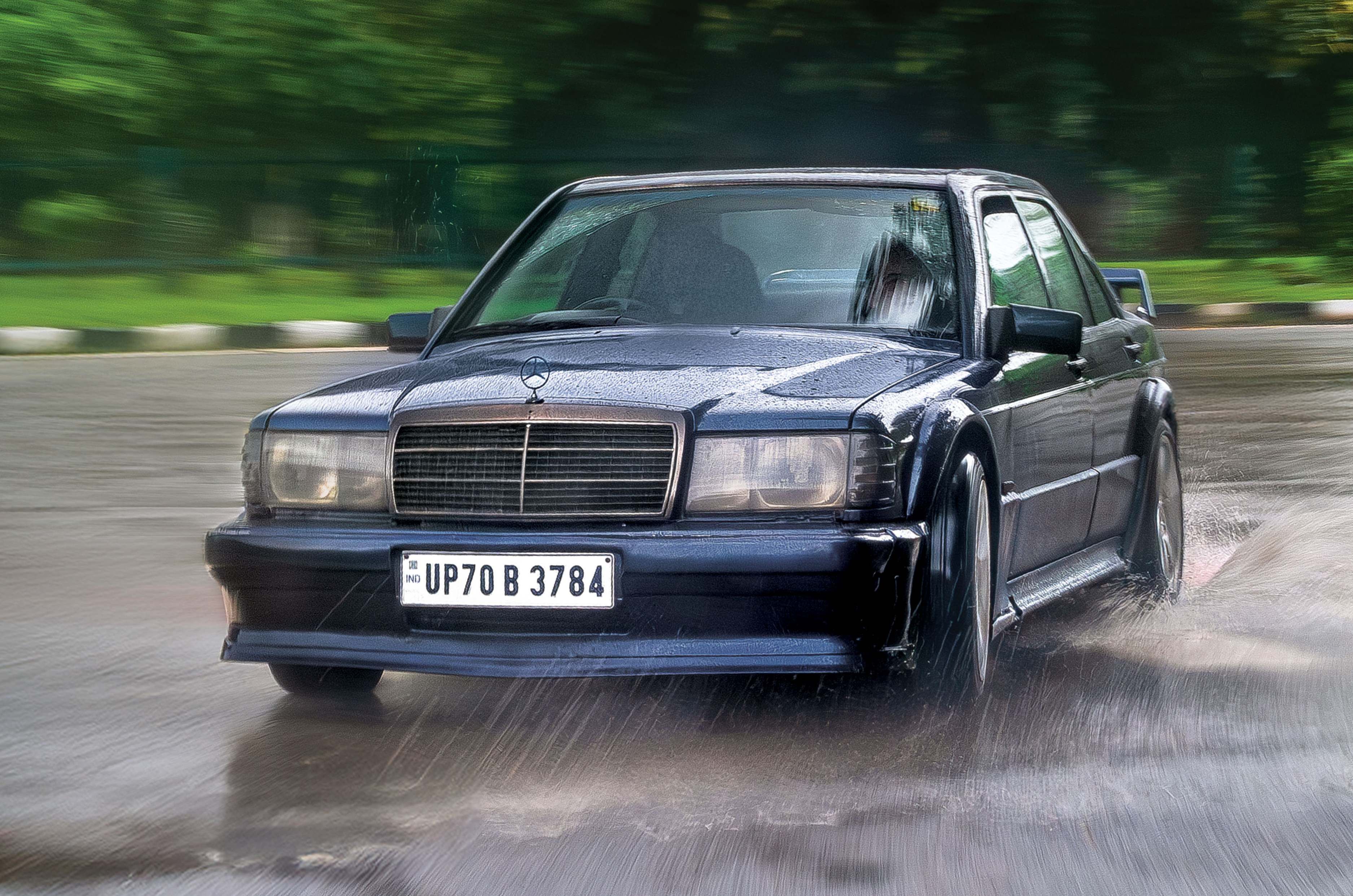
The snarling howl of a heavily boosted 2JZ – what a beautiful noise! Part whip-crack, part machine pistol, part animal scream, the note of the 2JZ is nothing if not distinctive. Hear one with a straight pipe, one that’s running a crazy amount of boost, and you instinctively know what it is. As distinctive as the Porsche 911’s flat-six or a Lambo V10, it’s just mad.
There’s only one problem. The soundtrack isn’t coming from an expected source. There’s no low-slung and bespoilered Supra in sight. What’s confusing is that it’s coming from the rear of a Mercedes! Something so different, so removed from Toyota’s icon, it feels almost abominable.
Now the Mercedes 190 compact, or W201, is a legend in its own right. Widely considered to be one of the most robustly engineered and put-together compact cars, the 190 and its DTM homologation cars have a rich motorsport heritage and mythology of their own.
2JZ-powered Mercedes 190 exterior design
As I walk up, I’m confused; do I peer under the bonnet first or admire designer Bruno Sacco’s masterful lines? The latter takes precedence. And having not looked at one closely for some time, I drink deep. What’s immediately clear is that the 190 (W201) seems tighter and leaner than the W210 that was assembled in India. Many of the shapes, forms and design elements are similar and familiar, but there’s clearly less flab and more purity in the lines. Then, the closer I look, the more I see Sacco’s genius.
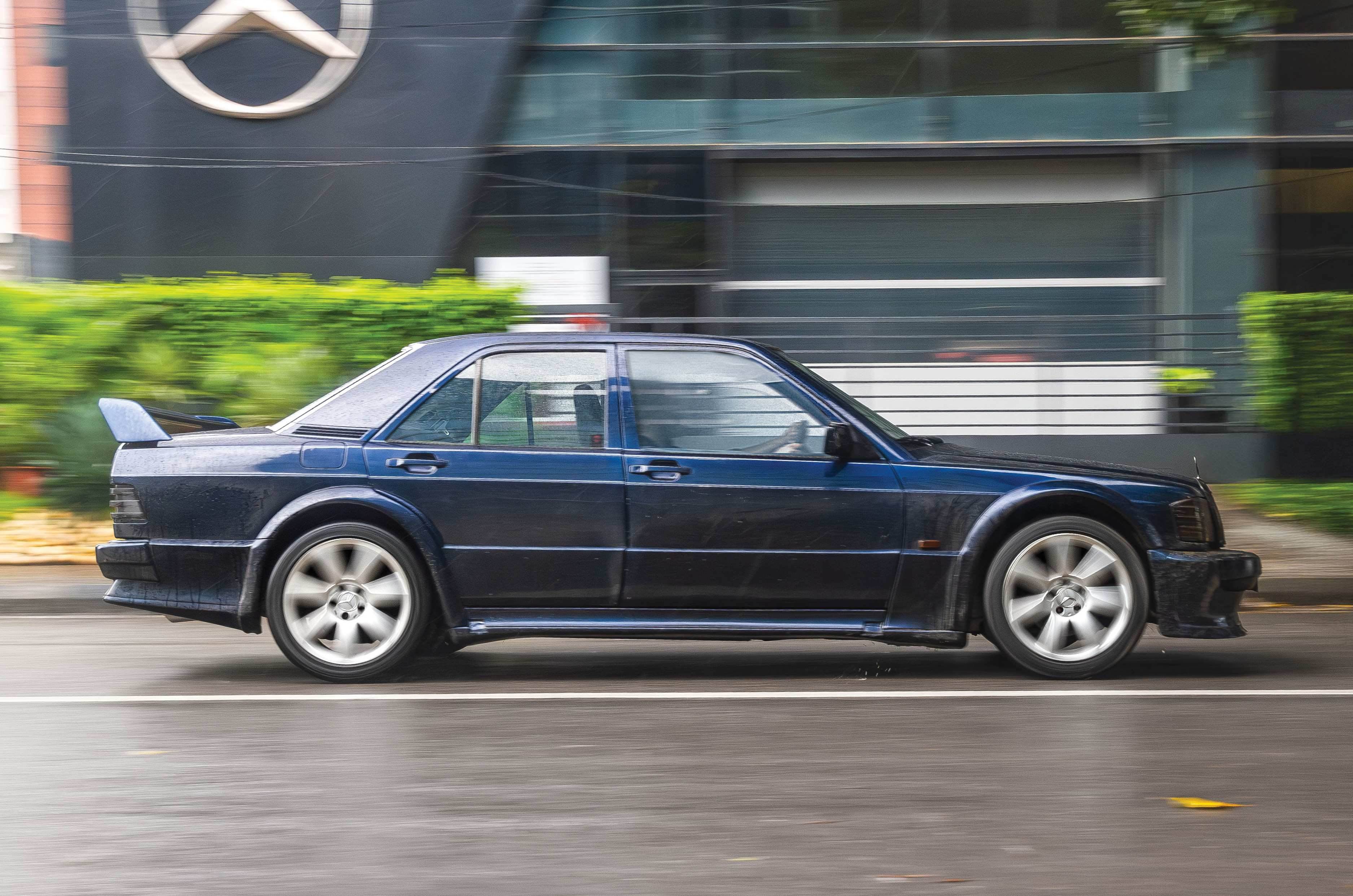
The shape of the C-pillar, how it transitions to the shoulder line, the purity of the lines, the sharp edges and the clean surfaces. And boy, have the lines aged well even today. And I must say I like the mods, like the blackened grille and headlights; they set the tone, and this is true of the lowered, wider stance as well. To help give it a better stance, it’s also two inches wider at the front and three inches wider at the rear, and since it needs more grip, it also runs on bigger alloys and wider rubber. The 190 Evo’s air dam, skirts and spoiler complete the look. The surprise is that this is no bolt-on kit; all the appendages have been fabricated in-house.
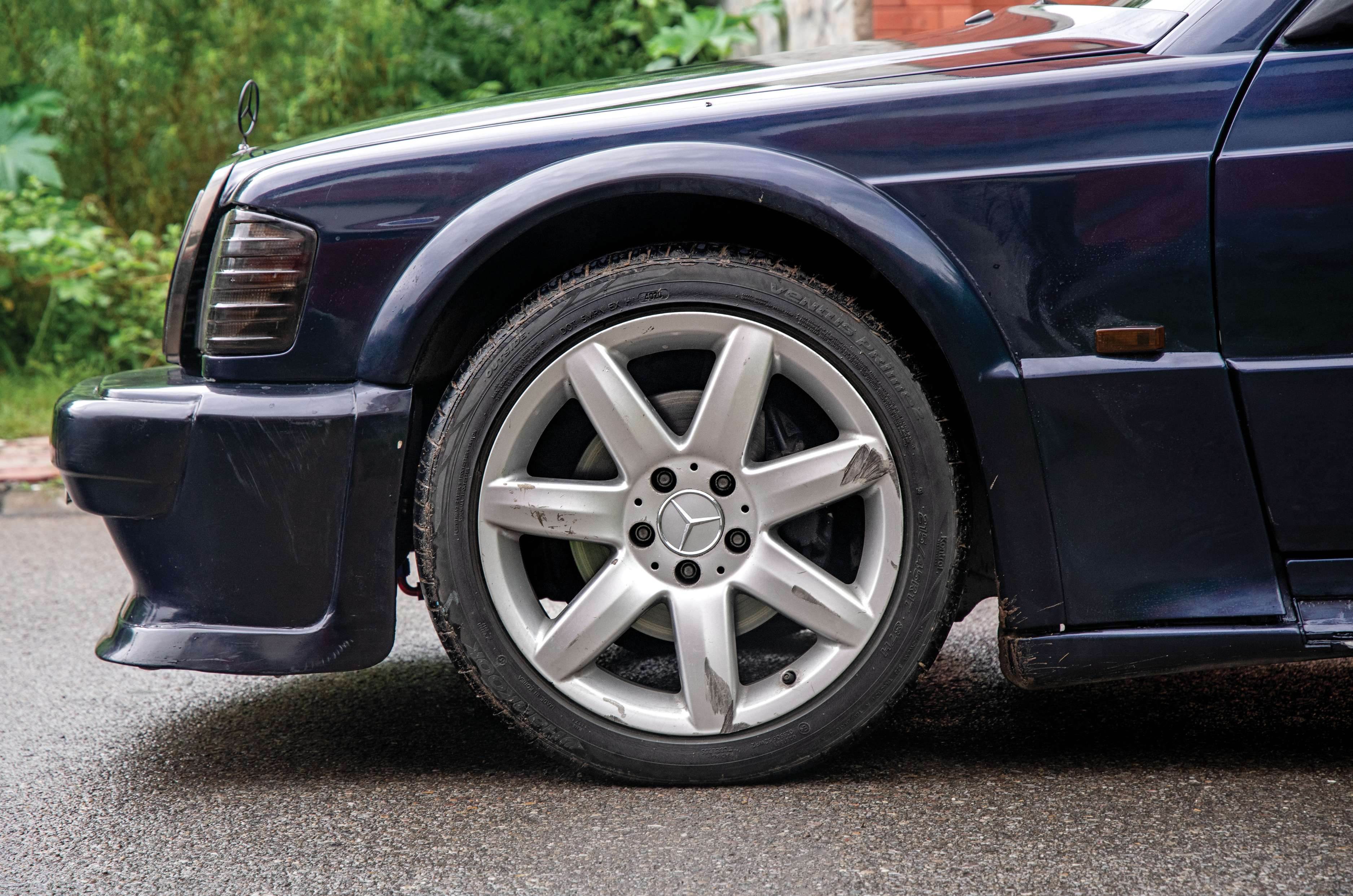
Can’t keep away from Toyota’s 2JZ, however, and so I pop the bonnet to reveal the massive, longitudinally mounted straight-six that somehow has been shoehorned into the 190’s bonnet. Wow. I had forgotten how large this engine is. And this one is also clearly not stock. The individual red coils on the cam cover come from an Audi R8, the massive intake is around three inches thick, and is that turbo really that large?
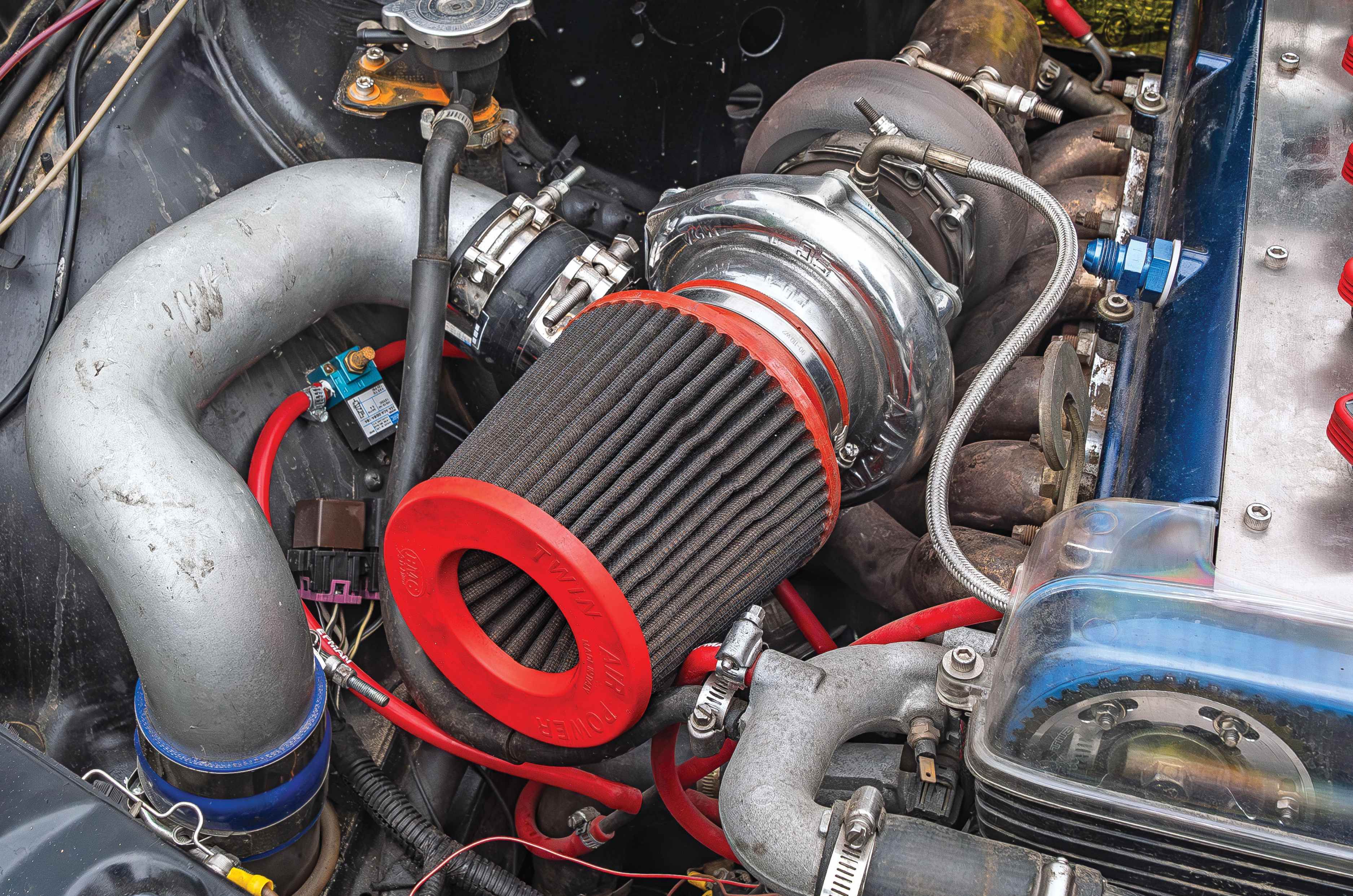
I splay the fingers on my hand and try to measure it, but the T78 is even larger. Then this car has one-litre injectors – up from roughly 350cc stock – uprated fuel pumps and a BMC ram air filter that practically sits right on the turbo. So it gets plenty of extra air and loads of additional fuel. Getting the air, fuel and spark to play together like a symphony is the job of the engine controller, or ECU, and here, that job is done by a standalone EMU Black that comes with a 2JZ setup. Also upgraded on the inside are 272 cams from HKS, a ported and polished head, forged pistons from CP, Manley rods and ACL bearings.
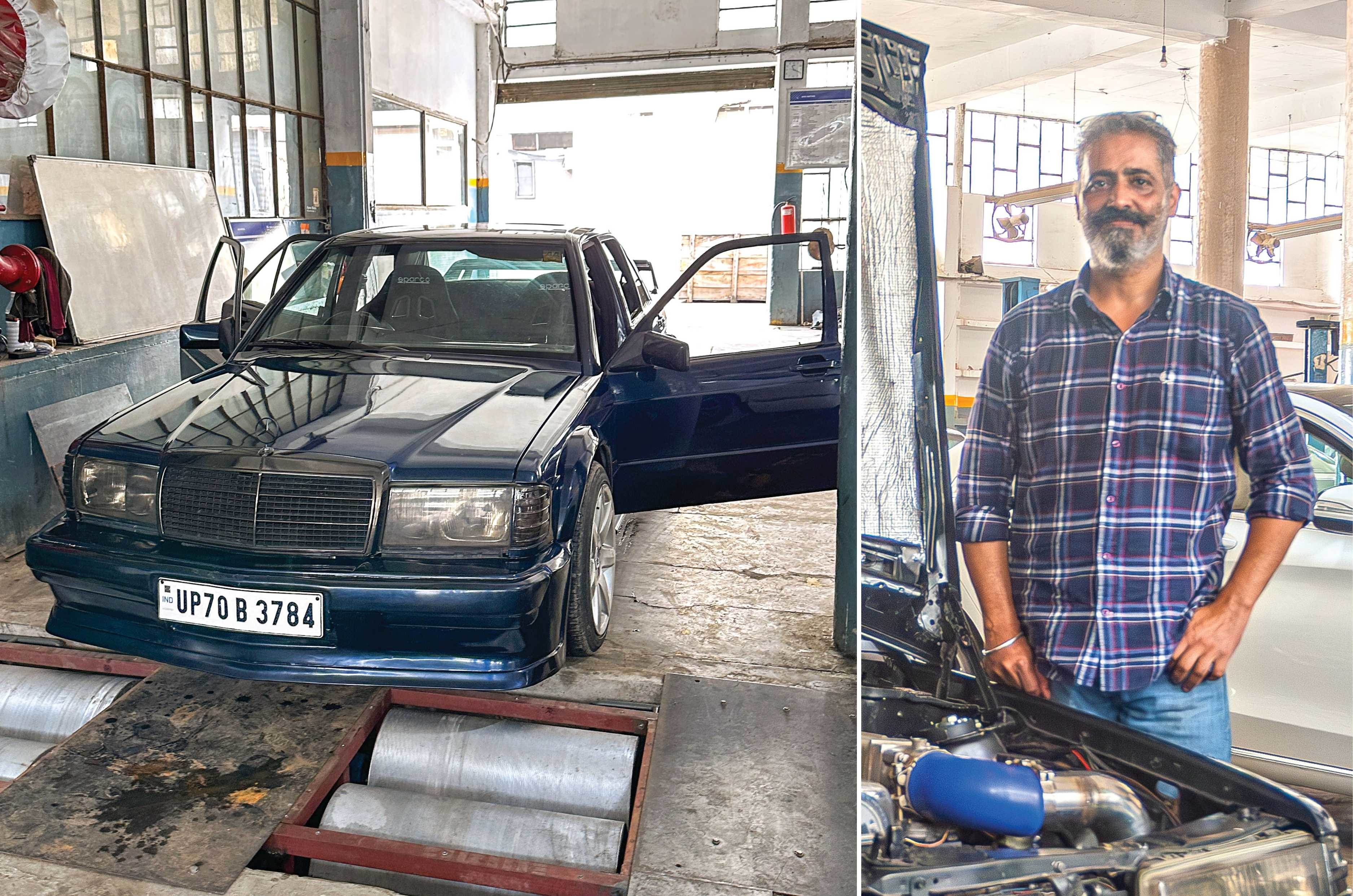
However, the day before we are scheduled to arrive in green Chandigarh, owner Anant blows the turbo on his car. This seems like game over. But Anant phones a friend and borrows a T78 GReddy. This arrives at around eight at night. Some quick spanner work and loads of familiarity with the system mean that the turbo is swapped and ready to go in an hour. The car is sat on an eddy current dyno, the ideal tuning tool for this setup. But we have to drive the car the next morning, so there’s no time for setup.
2JZ-powered Mercedes 190 interior
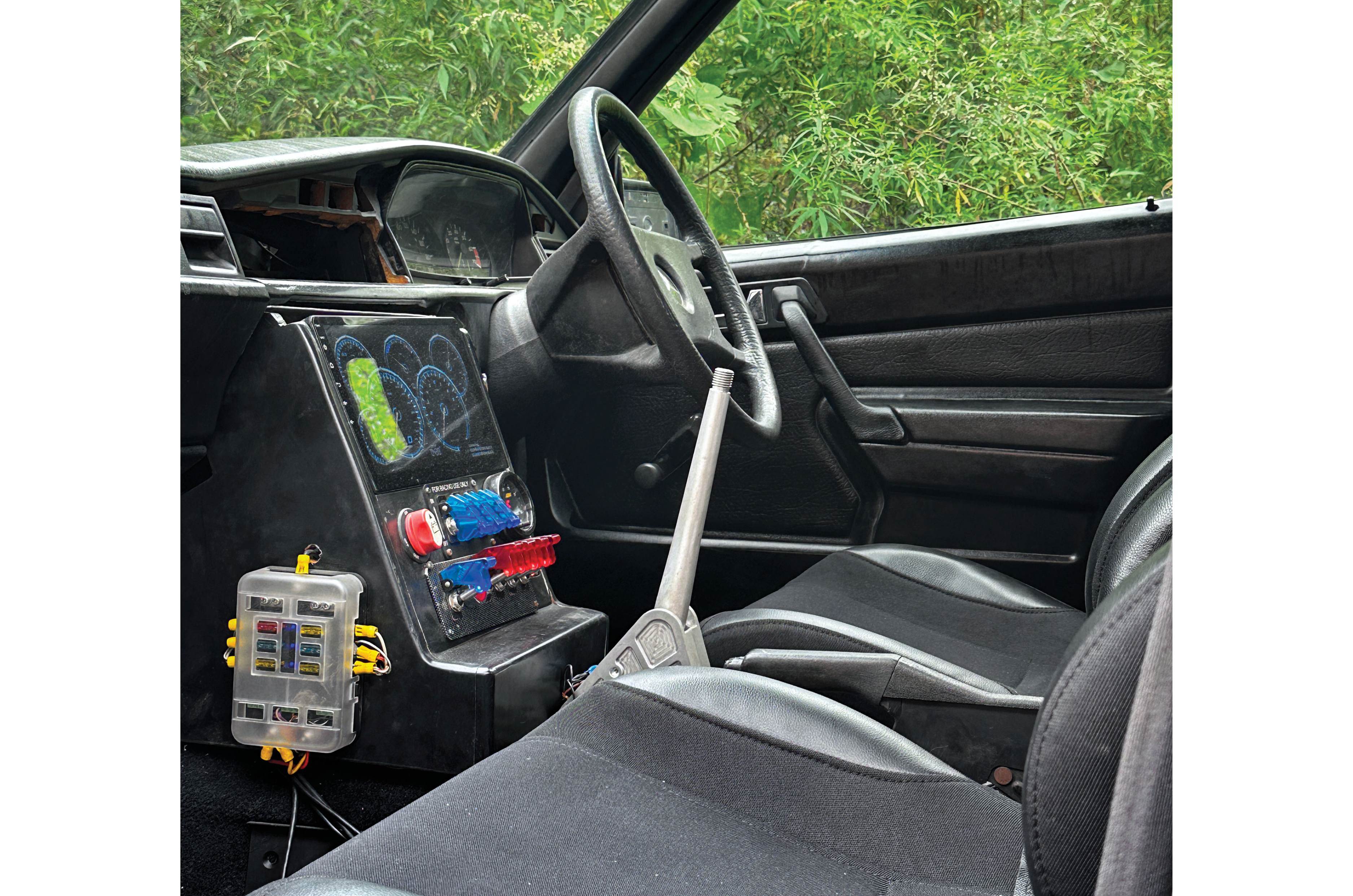
Then, another speed hump. It rains. Really, really hard. How do you put 400-500hp through to the rear wheels in the wet? Gulp. We wait a bit, so it isn’t coming down in sheets.
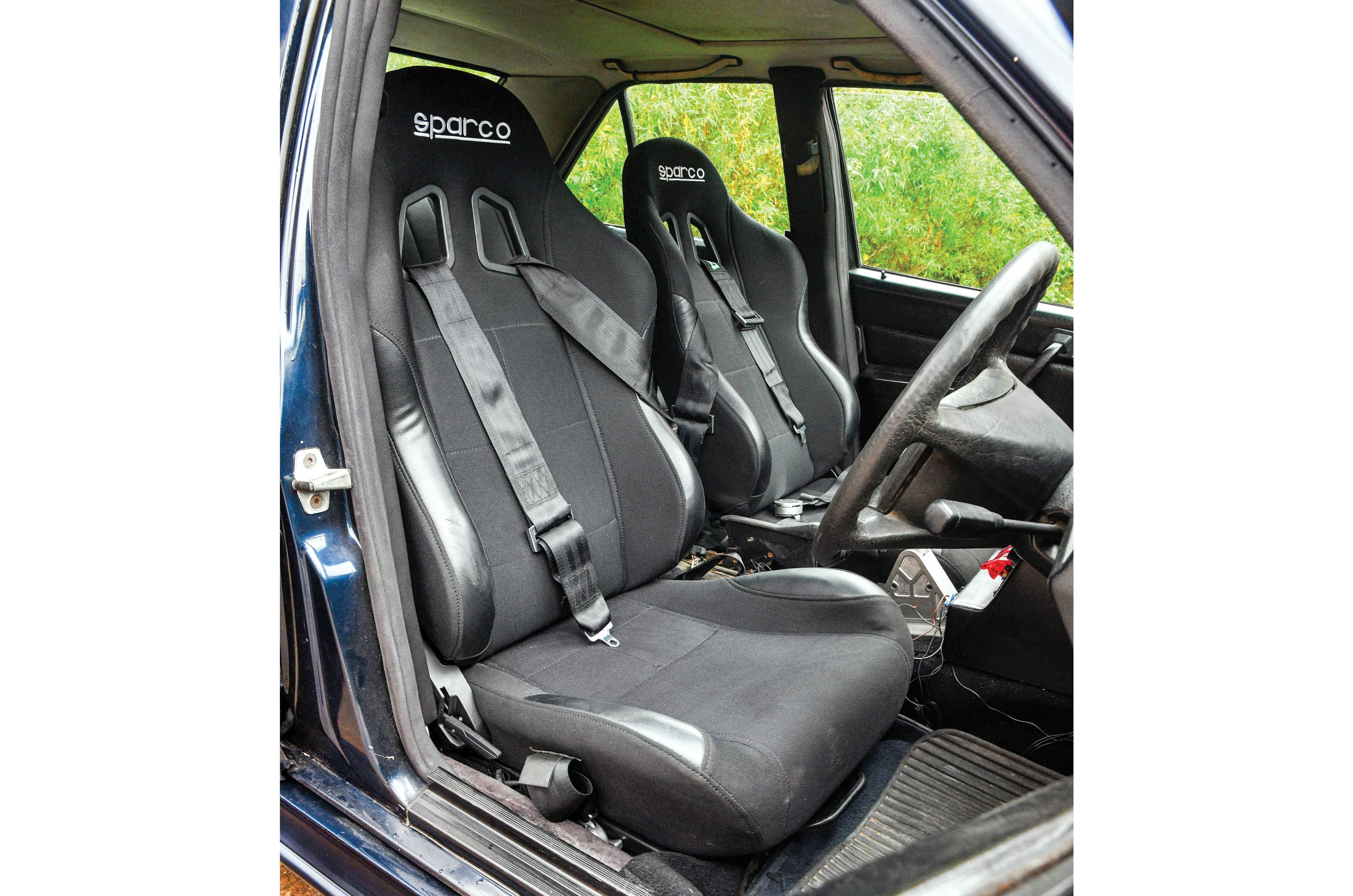
Best get familiar with the cabin, the cutouts, the control switches and the quickshifter. This car is now quite low, and as I settle down, the driving position feels sporty. The racing-type buckets have a harness that I click home, but what’s neat is that the seat slides back and forth.
As I settle in, I get to experience the build quality of the 190 first-hand. The doors feel light, and initially, this comes as something of a surprise. But as soon as I close the door, I’m quickly aware of a new sensation; it slots in almost perfectly. And though lighter than Merc’s doors from that era, they seem perfectly formed, even all these years on. Made of high-strength steel with side impact beams built in, they are so stiff that they feel like they are made of stainless steel.
2JZ-powered Mercedes 190 driving impressions
Soon, we decide to head out for an exploratory run. Once settled in, I flick on the master switch and the individual fuel pump, injector and gearbox switches, and fire the car up. The engine settles into a lumpy idle, and the entire shell of the 190 buzzes and pulses as I rev the engine. What’s nice is that this car still has the original instrument panel with the iconic white-on-grey dials with red highlights. They aren’t currently functioning, but I look at them as one would a work of modern art. They would look pretty cool as an art installation, don’t you think? And I also love the big, four-spoke Merc wheel with its conical rear section. It’s so out of character here, but that’s sort of part of the appeal.

There’s no knob on top, but I also relish using the quickshifter. I push it forward to engage ‘D’, and there’s a nice spring-loaded metallic ‘clack’ as it engages the 8HP ZF automatic transmission – from a diesel BMW! Despite the massive turbo and the big lag, there’s so much urge in the 2JZ, it skips forwards effortlessly even when I just caress the throttle. And then, when I add in more power, I can all but feel the motor take a deep breath and puff out a huge amount of thrust. As the boost starts to build and the turbo spools up, I feel a wave of power come over, and the 190 suddenly feels like it is made of tinfoil.
The steering is a bit heavy, and the brakes (similar in spec to a Lamborghini Gallardo) need a good shove to start working, so I spend the next couple of minutes getting used to this. What feels reassuring is that there seems to be plenty of grip on the lowered, hardened Bilstein B12 suspension, and though the setup is hard, it still feels usable even over broken roads.
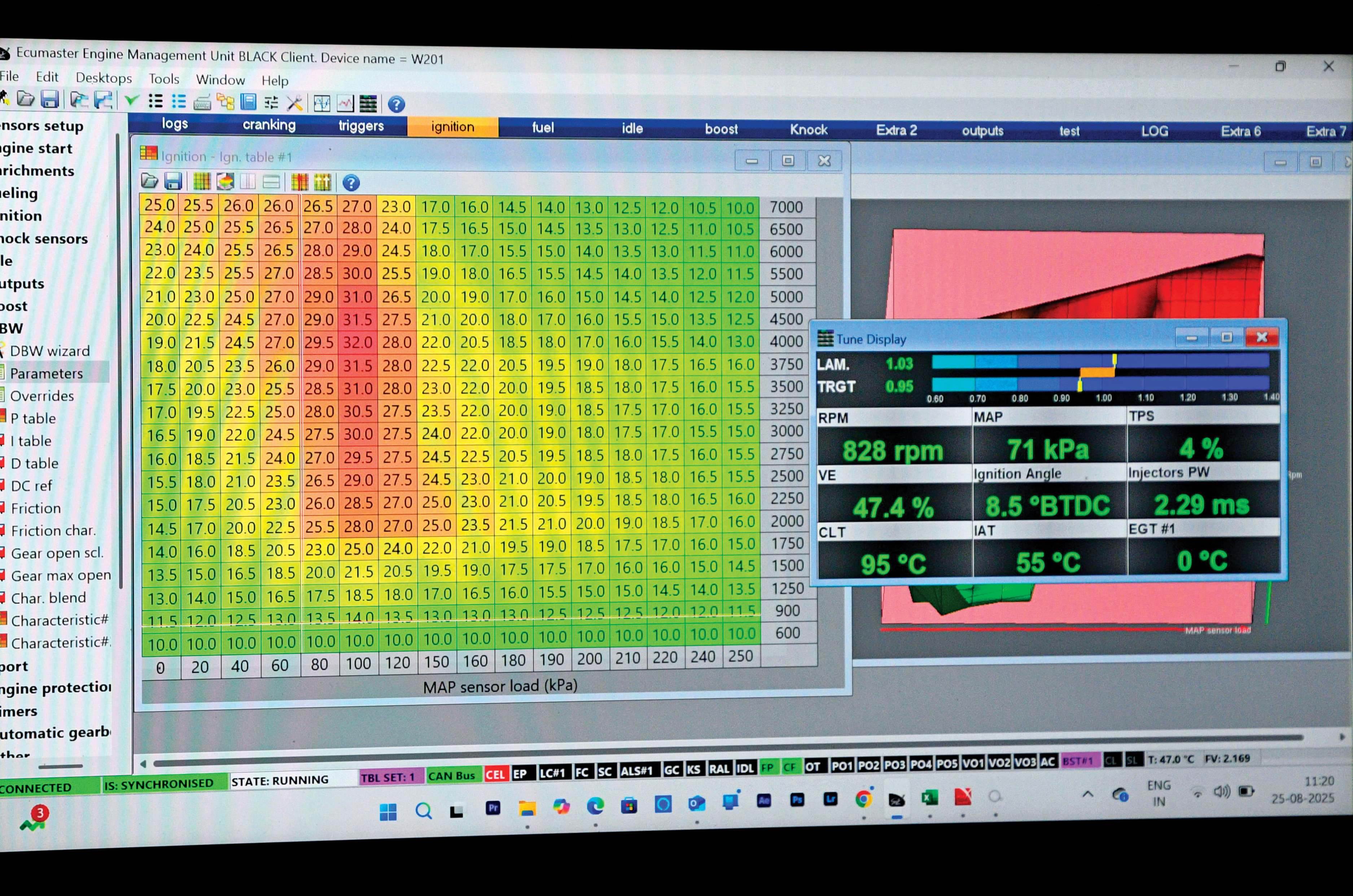
Then, a long stretch opens up, and I plant my right foot. The note of the engine changes immediately as the turbo begins to spool and spool and spool. It takes forever. And then, just as the boost starts coming in and we begin to be hurled forward, we run out of road, and I have to roll off the throttle. Reminds me of when we did 0-200kph in 11.6 seconds in an 800hp Supra back in 2006. We recorded the fastest time, gently ladling in the power and only going to full throttle progressively. Yeah, and I still remember, we had wheelspin at 160kph!
Sure, there’s plenty of recalibration and fine-tuning to be done. I didn’t unleash more than 350 or 400hp due to the deluge and we stayed away from the best part of the power band. But the potential is clearly there. And that’s the thing with the 2JZ; it just works. It can deliver the goods and has a tonne of aftermarket parts you can slap on to it. Can’t wait to drive this one again – on a dry day, and with the motor singing like a soprano.
What makes Toyota’s 2JZ a legendary engine
If ever there was a performance car engine that embodied Toyota’s obsession with overengineering, it’s the 2JZ. Famous for being the Supra’s twin-turbo straight-six, it’s an engine designed with a level of attention to detail and massive safety margins that simply wouldn’t be bankrolled today. In fact, so robust is the overall construction of the engine that it can easily make twice the original power without changing any internal components.
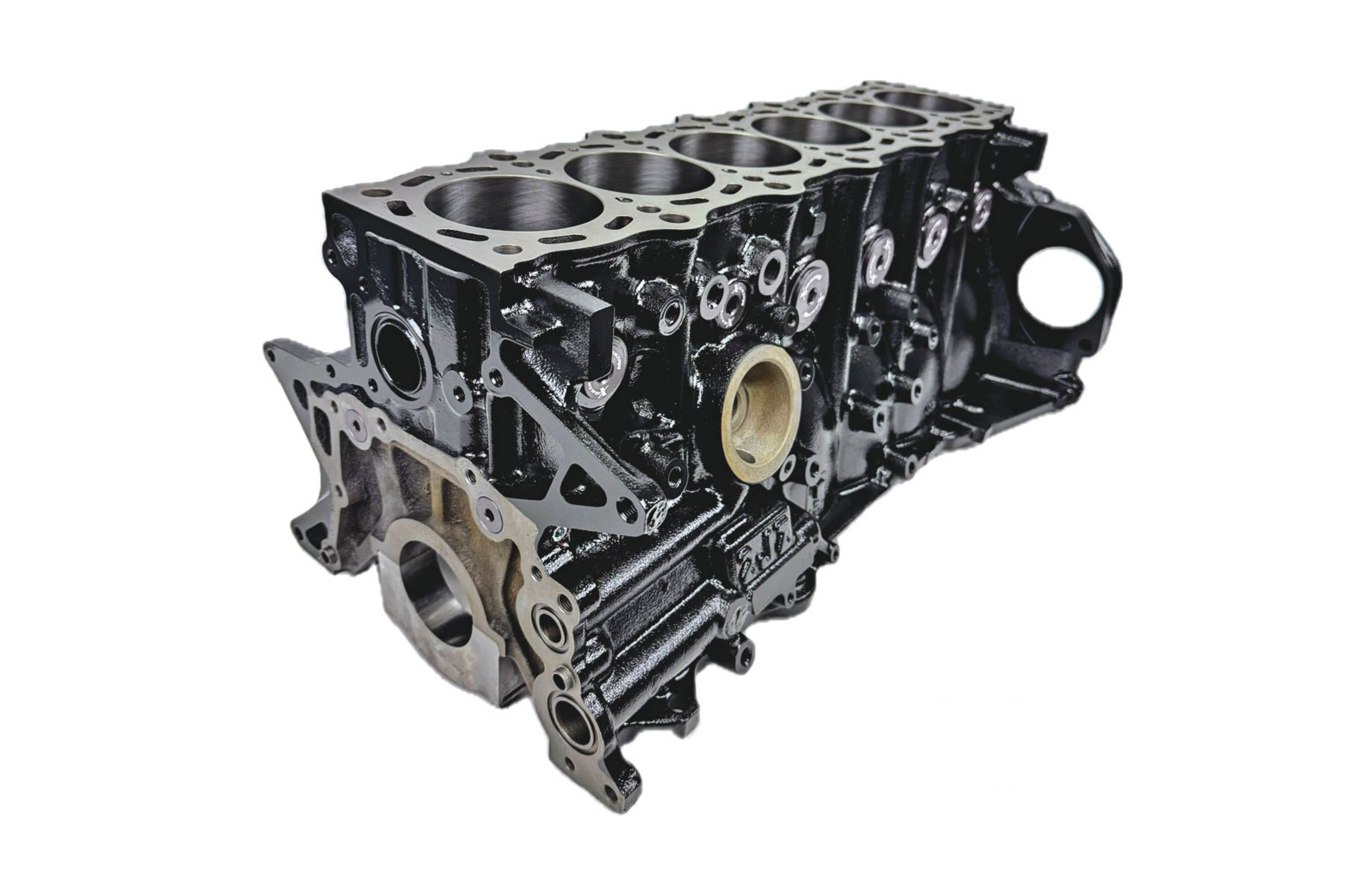
What makes it so tough is that the block is built like a safe, with large oil channels and massive strengthening ribs to prevent flex. And for even greater rigidity, there’s a separate girdle frame below. Less flex under load equals less movement and less distortion.
Also massively overbuilt is the forged steel crank, and what also makes it suitable for tuning is that it is a non-interference engine (the non-VVT-i versions), so the valves can never make contact with the pistons, even if the timing belt/chain snaps. On top, the alloy head is fastened with a three-layer steel head gasket, so it won’t pop even if you throw upwards of 700hp at it, and it gets forged connecting rods and an oil gallery inside the piston.
Also see:
Top 5 most affordable 6 cylinder cars in India
Off roading EVs: Tata Harrier EV and Mercedes G Class Electric

